Download these Free Printable Grading Rubric Samples in MS Word Format to make your Printable Grading Rubric Sample easily.
A grading rubric can be described as:
“A grading manual that gives a clear idea of the criteria and standards of marking and grading work or performance of students on a project, or portfolio. As well as presentation, research paper problem, any type of essay or any form of student work performance that needs to be evaluated”
A grading Rubric gives a scale and standard of expectations to the students when they are working on or learning something. A grading rubric can be a very effective means to help the evaluator generate an efficient scale of grading and marking the work and communicating it to the students at the same time.
Contents
- 1 Types of Grading Rubrics
- 1.1 The Main Part Of the Grading Rubric:
- 1.2 Guidelines for developing the grading rubric:
- 1.2.1 Free Printable Grading Rubric Samples
- 1.2.2 Grading Rubric Samples FAQs
- 1.2.3 What is a grading rubric sample?
- 1.2.4 Why should I use a grading rubric sample?
- 1.2.5 Where can I find grading rubric samples?
- 1.2.6 Can I customize a grading rubric sample to suit my needs?
- 1.2.7 How do I use a grading rubric sample effectively?
- 1.2.8 Share this:
- 1.2.9 Related
Types of Grading Rubrics
Two types of grading rubrics can be used according to the type of grading you are looking for.
Analytic Rubric: This type of grading rubric is used when the explanation on every level of the procurement gives a separate and definite score for each level or group.
Pros: An analytic rubric allows a detailed and extensively described analysis of the performance of students.
Cons: These types of rubrics are very time-consuming and lengthy.
When to Use Analytic Rubrics: Analytic Rubrics should be used when
- A detail of strengths and weaknesses has to be exhibited
- Detailed feedback on the performance of the students has to be displayed
Holistic Rubric: These are the type of grading rubrics that represent the description at each level but the scoring is done once on the overall performance of the student.
Pros: An Advantage of holistic grading rubrics is that they are efficient and less time-consuming. They are beneficial when scoring is done for a large number of students.
Cons: If one is seeking detailed analysis and information, holistic rubrics may fail to satisfy the diagnostic needs.
When to Use Holistic Rubric: These types of rubrics come in handy when a quick review is required. Since a holistic rubric is precise it is very useful to get a brisk analysis of a graded copy saving time.
The Main Part Of the Grading Rubric:
There are four main parts of a grading rubric. A simple grading rubric will include the following things mainly:
➔ The Description of the task: This part is where the purpose is defined. A short-summarized analysis of the report can be added to this part.
- Main characteristics that are being graded: The parts which are being graded are enlisted in this part, in a detailed
- The levels of mastery or expertise: This is the scale that may be in the form of numerals or other graded scales.
- The description and evaluation: The evaluation is then described in detail based on the developed scale.
Guidelines for developing the grading rubric:
- Determine and Decide the type of grading rubric that needs to be developed,
- Identify and outline the facts that are to be assessed and analyzed in the grading process.
- Outlines the characteristics and properties to be graded. The progress to be analyzed can be divided into various aspects that can be graded.
- Develop the scale of mastery and expertise. This part can be in the form of numerals from 1-10 or you can use other standards of grading.
- Describe the quality of the characteristics of the respective graded copy.
- Use the rubric and try it out on a testing basis, review the rubric personally to make sure it is easy to interpret and devoid of errors and omissions.
- Get feedback and discuss it with subordinates for reviews and improvements.
Some Pro tips for writing a standard Rubric:
- Use the word application to develop a Grading Rubric. This can help you to make changes and amendments very easily.
- You can find a relevant grading rubric and edit it according to your needs. This can save you time and help you have an idea about how to develop your rubric.
- Evaluate the grading rubric personally, using the rubric initially for testing the liability helps a lot of inaccurate evaluations.
- Share it with friends and colleagues for evaluation and suggestions. this can help you in proofreading and getting suggestive changes respectively.
Free Printable Grading Rubric Samples
Here is our collection of Free Printable Grading Rubric samples for you to download.
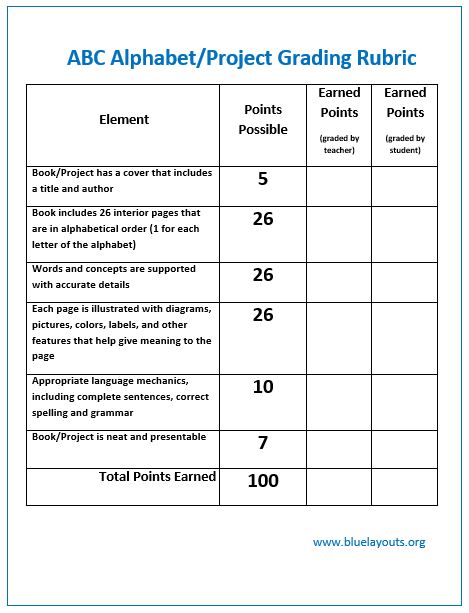
Here is the download link for this Printable Grading Rubric Sample 01,

The download link for this Printable Grading Rubric Sample 02 is here,
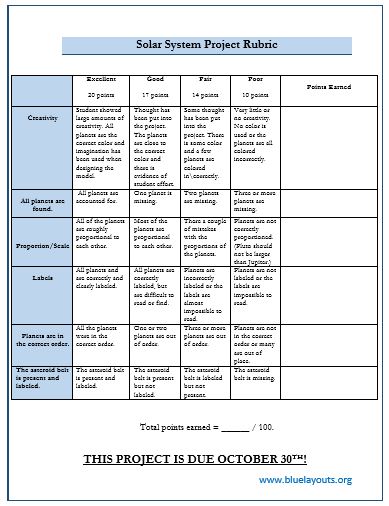
Here is the download link for this Printable Grading Rubric Sample 03 in MS Word Format,

The download link for this Printable Grading Rubric Sample 04 is below,
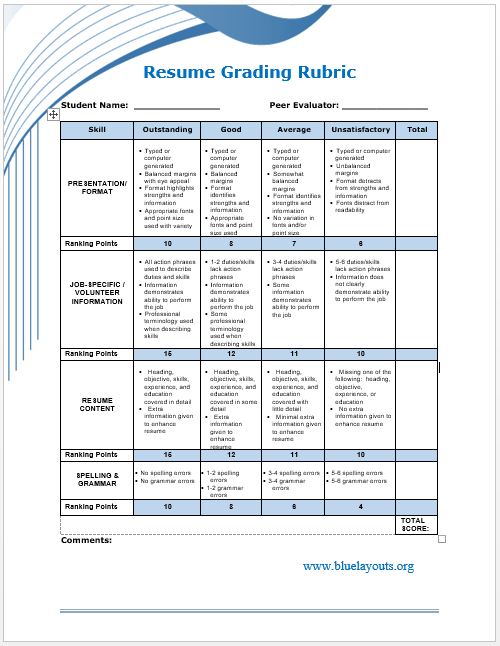
Here is the download link for this Printable Grading Rubric Sample 05 in MS Word Format,
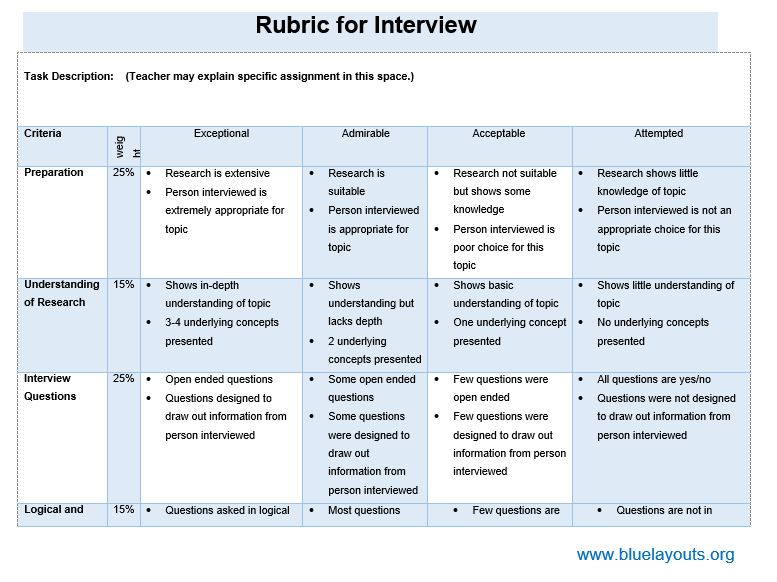
The download link for this Printable Grading Rubric Sample 06 is here,
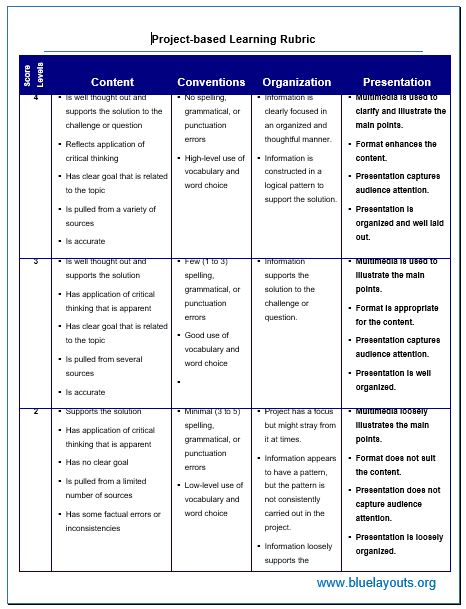
Here is the download link for this Printable Grading Rubric Sample 07 in MS Word Format,
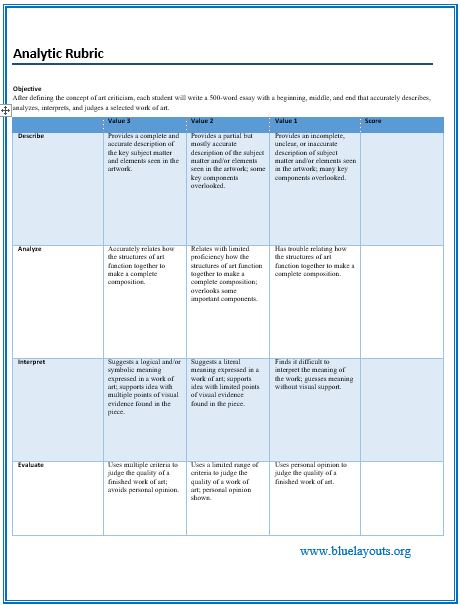
The download link for this Printable Grading Rubric Sample 08 is here,

Here is the download link for this Printable Grading Rubric Sample 09 in MS Word Format,
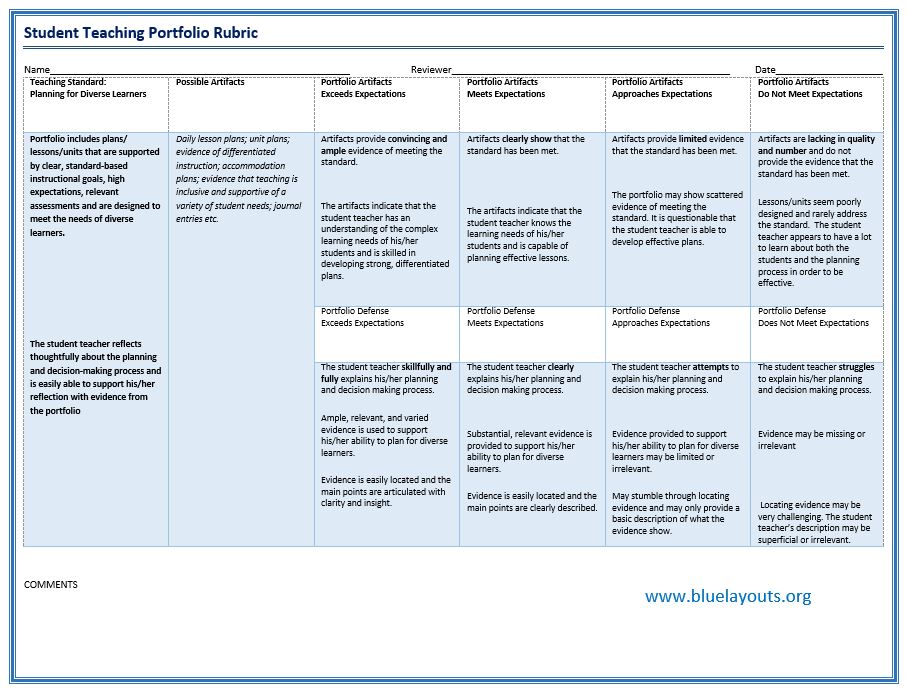
The download link for this Printable Grading Rubric Sample 10 is here,
Grading Rubric Samples FAQs
Why should I use a grading rubric sample?
Using a grading rubric sample can benefit both educators and students. It helps educators maintain consistency and transparency in their grading process, ensuring that all students are assessed fairly. For students, rubrics clarify the expectations for assignments, enabling them to understand how their work will be evaluated.
Where can I find grading rubric samples?
One can find grading rubric samples on numerous educational, academic, and textbook sites.
Can I customize a grading rubric sample to suit my needs?
Yes, absolutely! Grading rubric samples are often designed to be adaptable. You can modify and customize them according to your specific assignment requirements, learning objectives, and grading criteria. Tailoring the rubric to your needs ensures it aligns with your teaching style and accurately assesses student performance.
How do I use a grading rubric sample effectively?
To use a grading rubric sample effectively, follow these steps:
Familiarize yourself with the rubric and its criteria.
Share the rubric with your students before they start their assignments.
Provide clear explanations of the criteria and levels of achievement.
Use the rubric consistently and fairly when evaluating student work.
Offer constructive feedback based on the rubric to help students understand their strengths and areas for improvement.
Remember, grading rubrics are a tool to enhance the assessment process and support student learning.










